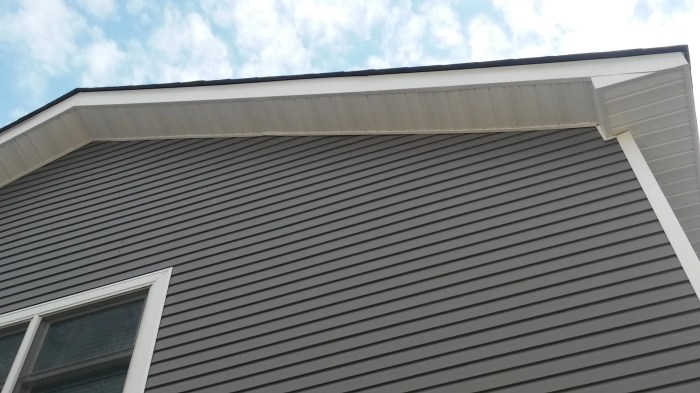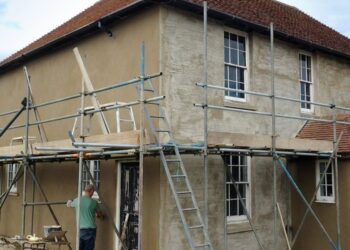Delve into the world of global siding and roofing, where innovation meets tradition in the construction realm. This captivating journey will unveil the latest trends, eco-friendly practices, and technological advancements reshaping buildings worldwide.
Discover the essence of quality siding and roofing materials and their impact on sustainable living across different continents.
Overview of Global Siding and Roofing Industry
The global siding and roofing market is currently experiencing several trends that are shaping the industry. With a growing focus on sustainability and energy efficiency, there is an increasing demand for eco-friendly materials and products. Additionally, technological advancements are driving innovation in the industry, leading to the development of new and improved siding and roofing solutions.Quality siding and roofing are essential components of any building, providing protection against the elements and enhancing the overall aesthetics.
Properly installed siding and roofing can improve the energy efficiency of a building, reduce maintenance costs, and increase its value. As a result, the importance of using high-quality materials and skilled professionals in the installation process cannot be overstated.Key players in the global siding and roofing industry include companies such as Owens Corning, CertainTeed, GAF Materials Corporation, and James Hardie Industries.
These companies are known for their expertise in manufacturing a wide range of siding and roofing products, catering to both residential and commercial markets. With a focus on quality, innovation, and customer satisfaction, these key players continue to drive the industry forward.
Types of Siding Materials
When it comes to siding materials, there are various options available globally. Each type of material has its own set of characteristics, benefits, and environmental impacts. Let's compare and contrast different types of siding materials used around the world.
Vinyl Siding
Vinyl siding is a popular choice due to its affordability, low maintenance requirements, and wide range of colors and styles. However, it is not the most environmentally friendly option as it is made from PVC, which can release harmful chemicals when produced and disposed of improperly.
Fiber Cement Siding
Fiber cement siding is known for its durability and resistance to fire, insects, and rot. It is made from a mixture of cement, sand, and cellulose fibers, making it a more eco-friendly option compared to vinyl. However, fiber cement siding can be more expensive and require professional installation.
Wood Siding
Wood siding offers a natural and classic look to a home. It is biodegradable and renewable, making it a more sustainable choice. However, wood siding requires regular maintenance, such as painting or staining, to prevent rot and decay. It is also more prone to insect damage compared to other materials.
Aluminum Siding
Aluminum siding is lightweight, durable, and resistant to corrosion. It is a low-maintenance option that can be easily recycled. However, aluminum siding may dent or scratch easily, and it may not provide as much insulation as other materials.
Brick Siding
Brick siding is known for its longevity and classic appearance. It is fire-resistant, energy-efficient, and requires minimal maintenance. However, brick siding can be expensive to install and repair, and it may not be as versatile in terms of design options compared to other materials.
Conclusion
In conclusion, the choice of siding material for a home depends on factors such as budget, aesthetic preferences, durability, and environmental impact. It is important to weigh the pros and cons of each material to find the best fit for your needs.
Roofing Systems Around the World
Roofing systems vary greatly across different regions of the world, influenced by factors such as climate, materials availability, cultural preferences, and architectural styles. The choice of roofing system plays a crucial role in the overall efficiency and sustainability of a building.
Asphalt Shingles
Asphalt shingles are one of the most common roofing materials used in North America. They are affordable, easy to install, and come in a variety of colors and styles. However, asphalt shingles have a relatively short lifespan compared to other roofing materials.
Clay Tiles
Clay tiles are popular in Mediterranean and tropical regions due to their durability, heat resistance, and aesthetic appeal. They can withstand extreme temperatures and are known for their longevity. However, clay tiles can be heavy and require a sturdy roof structure.
Metal Roofing
Metal roofing is versatile and widely used in both residential and commercial buildings around the world
Thatched Roofing
Thatched roofing is common in tropical regions and provides natural insulation and a rustic look. While thatched roofs are environmentally friendly and sustainable, they require regular maintenance and are more prone to fire hazards.
Factors Influencing Roofing System Choice
The choice of roofing system is influenced by factors such as climate, budget, building regulations, aesthetics, and maintenance requirements. For example, regions with heavy snowfall may opt for steep-sloped roofs to prevent snow buildup, while areas prone to hurricanes may choose impact-resistant roofing materials.
Energy Efficiency of Roofing Systems
The energy efficiency of a roofing system can significantly impact a building's overall energy consumption. Reflective roofing materials such as white membrane roofs or metal roofs can help reduce heat absorption and lower cooling costs. Additionally, proper insulation and ventilation play a crucial role in maintaining energy efficiency in buildings.
Sustainable Practices in Siding and Roofing
When it comes to sustainable practices in the siding and roofing industry, there are various eco-friendly approaches that can be implemented to reduce the environmental impact of construction projects.
Benefits of Using Eco-Friendly Materials
- Reduced energy consumption: Eco-friendly siding and roofing materials are often designed to improve insulation, leading to lower energy bills and reduced carbon emissions.
- Longevity: Sustainable materials are typically durable and long-lasting, reducing the need for frequent replacements and minimizing waste.
- Improved indoor air quality: Many eco-friendly materials are low in volatile organic compounds (VOCs), contributing to healthier indoor environments.
- Enhanced resale value: Homes with sustainable siding and roofing features are often more attractive to environmentally-conscious buyers, potentially increasing property value.
Certifications and Standards
There are several certifications and standards that govern sustainable practices in the siding and roofing industry, ensuring that materials meet specific criteria for environmental performance.
One of the most well-known certifications is the Leadership in Energy and Environmental Design (LEED), which sets guidelines for sustainable building practices, including the use of eco-friendly materials.
Other standards, such as the Forest Stewardship Council (FSC) certification for wood products, certify that materials come from responsibly managed forests, promoting sustainable forestry practices.
Technological Advancements in Siding and Roofing
Technology plays a crucial role in shaping the global siding and roofing sector, bringing about innovative solutions and improving efficiency in construction processes. From smart siding materials to advanced roofing systems, the industry is constantly evolving to meet the demands of modern architecture and sustainability standards.
Smart Siding and Roofing Solutions
Smart siding and roofing solutions integrate technology to enhance the performance and functionality of building exteriors. These innovative materials are designed to improve energy efficiency, provide better insulation, and offer increased durability. For example, smart siding can incorporate sensors to monitor environmental conditions and adjust ventilation or shading accordingly, while smart roofing systems can harness solar energy to generate electricity for the building.
Impact of Automation and Digitization
Automation and digitization have revolutionized the siding and roofing industry by streamlining construction processes and reducing manual labor. Advanced machinery and robotics are used for manufacturing siding materials and installing roofing systems, leading to faster production timelines and improved precision.
Digitization has also enabled the use of Building Information Modeling (BIM) software for detailed planning and design, resulting in more accurate installations and minimized material wastage.
Concluding Remarks

In conclusion, the global siding and roofing industry stand at the crossroads of tradition and technology, paving the way for a more sustainable and efficient future in construction. From eco-friendly materials to cutting-edge innovations, the landscape of buildings is evolving to meet the demands of a changing world.
Q&A
What are some common trends in the global siding and roofing market?
Current trends include the rise of eco-friendly materials, increased focus on energy efficiency, and the integration of technology for smart solutions.
How do different types of siding materials compare in terms of environmental impact?
Materials like vinyl and fiber cement have different environmental footprints, with some being more sustainable than others based on production and disposal processes.
What are some key factors influencing the choice of roofing systems globally?
Factors such as climate, building regulations, and cost play a significant role in determining the most suitable roofing system for different regions.











